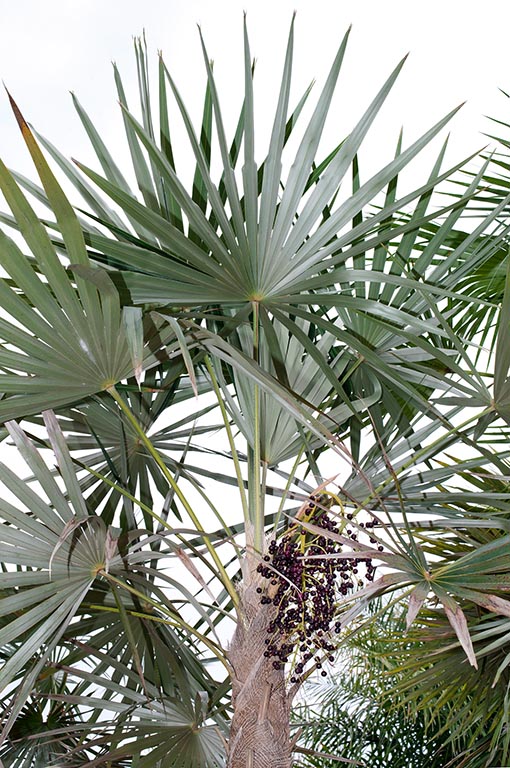Family : Arecaceae

Text © Pietro Puccio

English translation by Mario Beltramini

The Coccothrinax scoparia is an ornamental palm for the tropics © Giuseppe Mazza
The name of the genus comes from the combination of the Greek term “kokkos” = berry and by the name of the genus Thrinax, to which these plants do resemble; the name of the species comes from the Latin “scopae, arum” = broom, with reference to the utilizations of its leaves for making brooms.
Common names: highland silver palm, Haitian mountain silver palm (English); latanier balai (French – Haiti); guano (Spanish).
The Coccothrinax scoparia Becc. (1908) is a monoecious unarmed species with single stem that can reach, in the wild and in the older specimens, a height of 12 m with a diameter of 10 cm, but which, in cultivation, keeps lower, covered, but in the older parts, by the fibrous foliar bases placed in two layers.
The leaves, on a 70-80 cm long petiole, are palmate, orbicular, of opaque pale green colour on the upper page, silvery grey below, deeply incised with 35-40 rigid segments, about 65 cm long at the centre and united at the base for a length of 10-15 cm.
Inflorescences between the leaves carrying white hermaphrodite flowers, the fruits are spherical of 0,8-1 cm and of blackish purple colour when ripe, containing one seed only. It reproduces by seed which germinates in 2-4 months, the growth is fairly slow.
Species standing between the most ornamental of the genus, it is cultivable in the tropical, subtropical and, marginally, warm temperate climate zones, where it can resist, when adult, to occasional drops of temperature up to -2/-3 °C for a very short time, even if with damage to the foliage.
It requires a full sun exposition, or, at the most, a slight shade, and is not particular about the soils, even poor, provided perfectly draining, with preference to the alkaline ones. Well rooted, it can stand drought periods, even if takes advantage from regular waterings in the zones characterized by long warm and dry summers. In the past, the leaves were utilized for making brooms and as cover for makeshift shelters.
→ For general notions about ARECACEAE please click here.
